| Photojournal
- 17 November
2005
Kingfisher
initiation
|
I got to work fairly
early on the 17th, which was a Thursday. By that, I mean I got
to work early for me, which would be late for most folks.
I sifted through some papers and thought longingly about how nice
the weather was outside.
Well, that didn't last
too long. I had been promising one of my newer colleagues that
I would take her out birding some day, and since she was in, I
asked her if she was up for it and got an enthusiastic yes
in response. So later in the day, we drove out to Blackie Spit
to have a look. I spent a lot of time explaining things (she was
a novice birder) so I wasn't firing off my camera all the time,
and I got fewer than the usual number of photos.
When we first arrived,
we had some American Wigeon quite close on the east side of the
spit. Across the bay, near the train tracks, I spotted a Northern
Harrier flying around, scaring up a load of ducks and shorebirds.
Here the harrier is on the right of the photo, and the fleeing
ducks on the left.
|
|
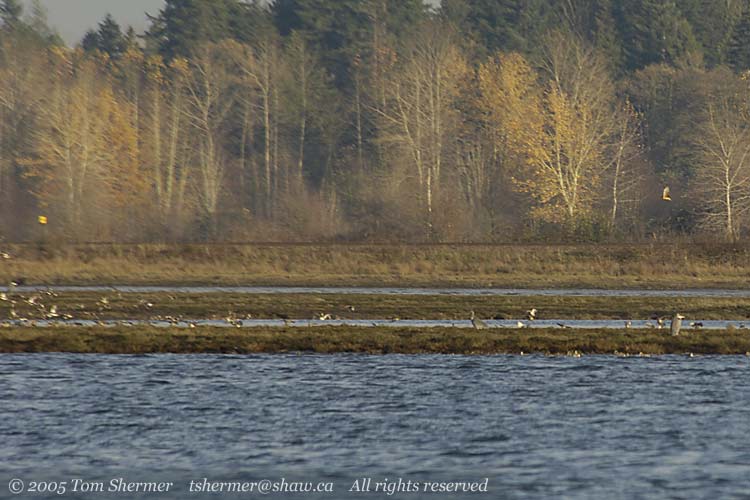 |
|
Actually, I spotted
the fleeing ducks, which were pretty obvious, and then looked
around to find the harrier, which was less so.
After watching ducks
for a while, we walked around the different parts of the park,
and came across a few cormorants on piles. The sun was poking
through the clouds in places, giving a strong light on the piles
and birds.
|
|
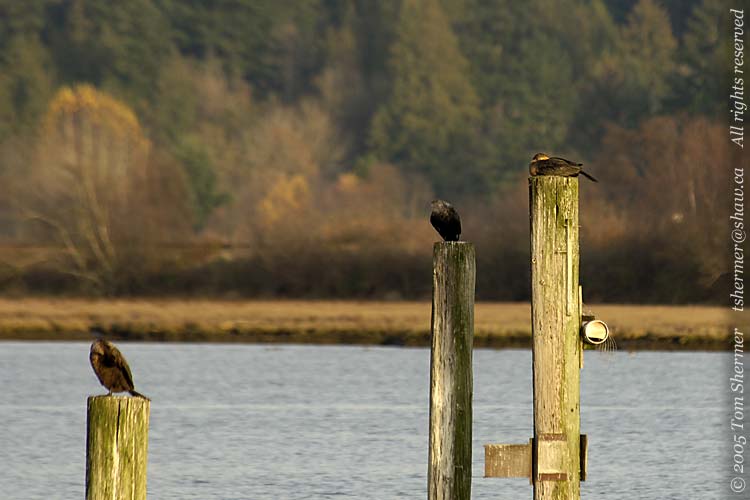 |
| Here's another
shot of some cormorants. The orange bill means that these are Double-crested
Cormorants. |
|
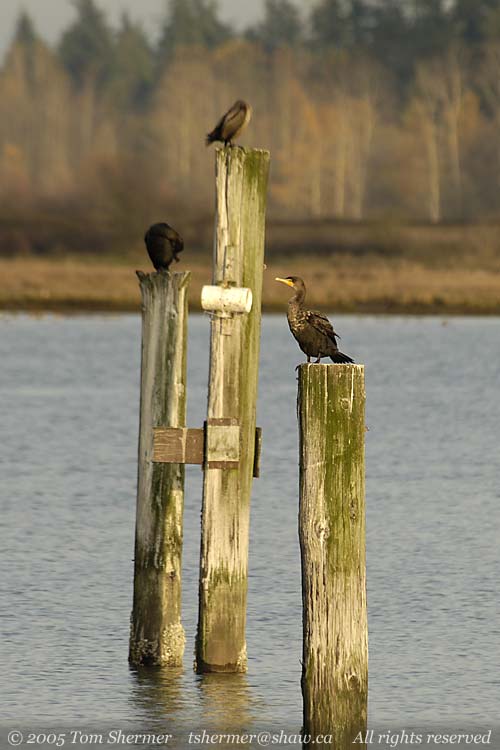 |
|
Although my colleague
hadn't done much birding, she does know a lot of interesting stuff
about birds. Her research is on developing models of sounds, and
she has studied bird calls and the ways that birds make them.
Although some birds have interesting ways of making sounds with
their wings or bills, most use their voice, which is produced
by a structure called the syrinx. The syrinx is the avian
equivalent of our larynx, but it's much niftier. For instance,
it can produce two completely separate tones at once, where we
can only produce one. The syrinx is also much more efficient in
producing sound from moving air (breath) than the larynx. Anyhow,
my colleague has produced computer models of the syrinx and has
synthesized bird calls with it. It's pretty neat research.
Now, I have fairly
poorly-functioning ears (especially in the high frequencies) and
not a great memory for sound. As a lot of birding is done by ear,
I miss out on finding a lot of birds and on being able to identify
some of the ones that I do find.
My colleague, on the
other hand, has spent her life studying sounds; and not coincidentally
has good ears and a good sound memory. So I must admit to ulterior
motive in dragging her out birding with me: she's exactly the
kind of person I need to have along in order to find the stuff
I've been missing. I'll tote my camera and she can carry her boom
mike.
That'd be a ways off,
though...first I'd have to get her interested enough to learn
all the usual bird calls so that she'll notice when something
is unusual.
Well, I digressed.
We were walking around the park, and saw a few shorebirds, a few
more ducks, and some finches. Soon we came across the star of
the day, a Belted Kingfisher, who was flying around the slough
over by the community gardens.
|
|
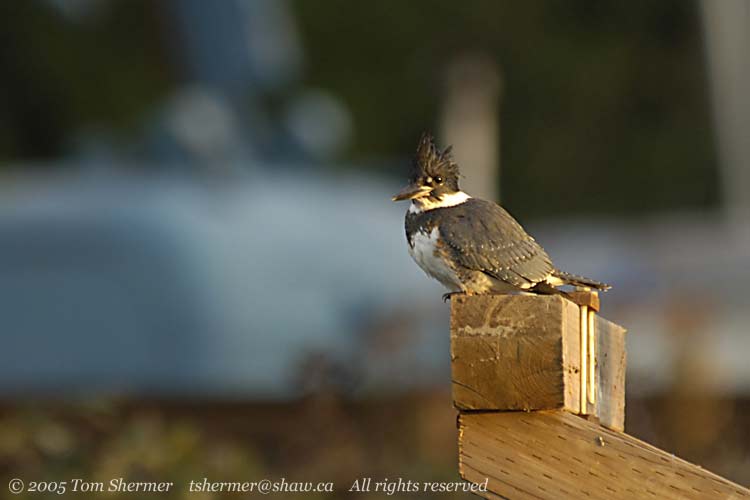 |
| He was flying
between two or three perches, fishing from the one shown above.
He was only catching teeny little fish, though. |
|
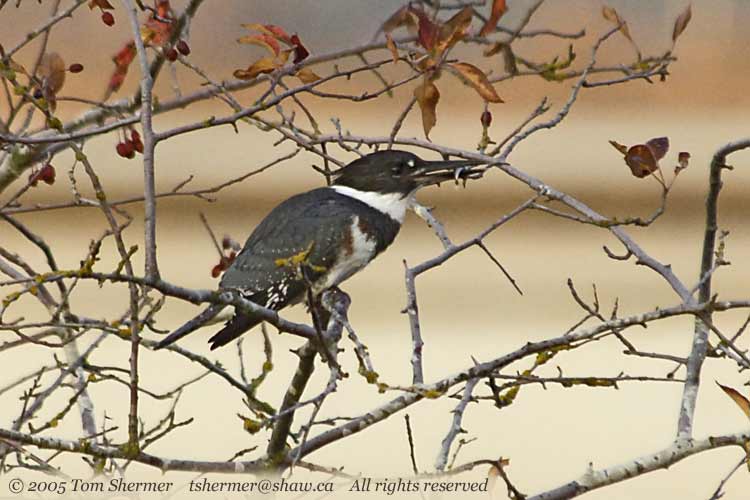 |
| He didn't
seem to mind us being around. Most kingfishers I've seen have been
a little more shy. Maybe he was just focussed on his fishing. |
|
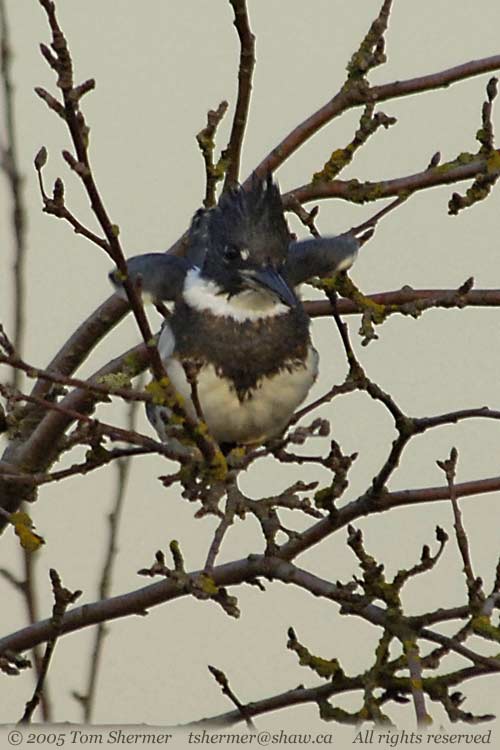 |
| We got to
watch him for ten or more minutes, while he caught and ate several
little fish. Here's one more shot of the handsome fellow. |
|
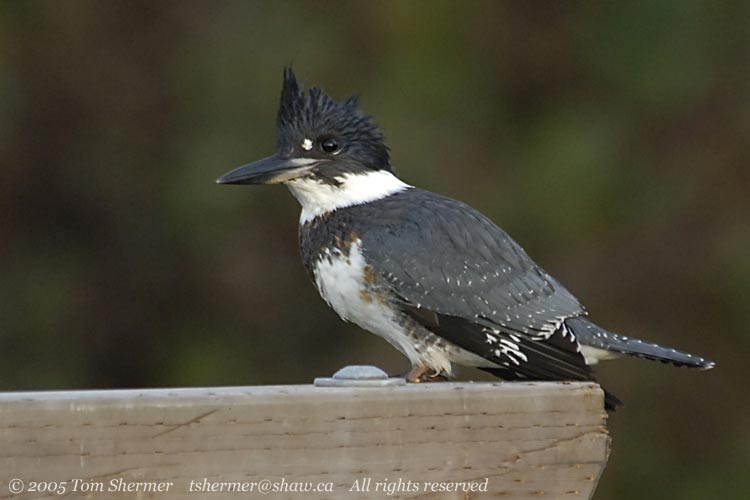 |
| With the
days being short, the sun was soon getting pretty far down. I took
a few landscapes, and we headed on. |
|
 |
|
We had seen a number
of birds, mostly common species, but it was more than enough to
dazzle my friend. I had a great time, too: being reminded of how
fascinating even the common birds are is a wonderful thing.
On the other hand,
the kingfisher show would've made my day any day.
Less photographic than
usual,
Tom
|
|
|